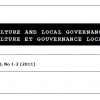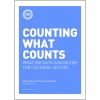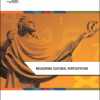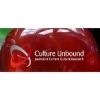John Hartley (Curtin University) & Jason Potts (RMIT University)
What makes a great city? This is the question that the construction of world city or global city indexes has sought to answer.
The CCI Creative City Index (CCI-CCI) is a new approach to the measurement and ranking of creative global cities. It is constructed over eight principal dimensions, each with multiple distinct elements. Some of these dimensions are familiar from other global city indexes, such as the MORI or GaWC indexes, which account for the size of creative industries, the scale of cultural amenities, or the flows of creative people and global connectedness. In addition to these indicators, the CCI-CCI contributes several new dimensions. These measure the demand side of creative participation, the attention economy, user-created content, and the productivity of socially networked consumers.







